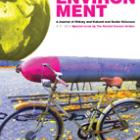Wöbse, Anna-Katharina. “Knechtsand: A Site of Memory in Flux.” Global Environment 11 (2013): 160–83. Republished by the Environment & Society Portal, Multimedia Library. http://www.environmentandsociety.org/node/7587.
On 9 September 1952, what was known as the Knechtsand Treaty came into force. It codified a barter agreement that the German chancellor Konrad Adenauer had negotiated with the Allies. The Knechtsand, a sandbank in the estuary of the Weser, would from now on serve as a bombing range for the British and American air forces stationed in England. Soon, however, objections were made by local fishermen, politicians, and bird-lovers. These objections gained support from European networks of conservationists as the victims of the bombing—molting shelducks—were migrating birds. The subsequent protest served as a practice run for civil society activism in participating in pre-ecological and in particular ethical debate about the protection of animals and nature. In the long run the sandbank would turn into one of the historical heartlands of the national park and today’s World Natural Heritage Wadden Sea. Knechtsand was a multifaceted test site for the exploration of fundamental political, social, and ecological debates. By approaching this location and its feathered inhabitants historically and sketching out a topography of memory, this article uncovers strands of tradition that are hugely significant for our understanding of the Wadden Sea and the expanding conservation regime.
— Text from The White Horse Press website
All rights reserved. Made available on the Environment & Society Portal for nonprofit educational purposes only, courtesy of Anna-Katharina Wöbse and XL edizioni.


